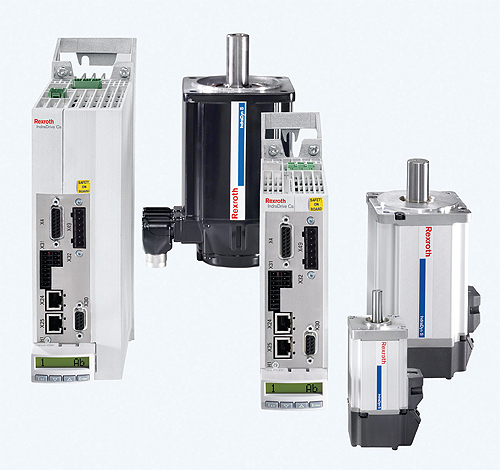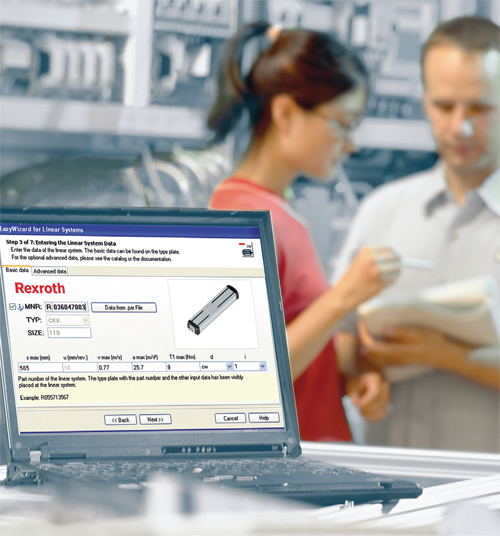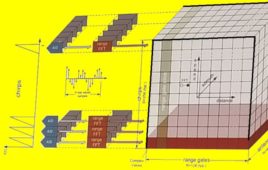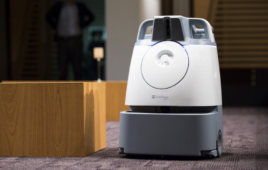By Richard Vaughn, Senior Automation Engineer, Bosch Rexroth Corporation, www.boschrexroth-us.com
Manufacturers implementing mechatronic and robotic handling systems constantly seek to do more with less. Creating systems faster and easier leads to systems that are less expensive to design, engineer, and bring online.
Here are some practical implementation tips. Focusing to prevent overly complicated designs as well as simplify sourcing and commissioning of integrated electromechanical systems.

Evaluating commonalities for the application
Automation systems are engineered to satisfy specific business and applications requirements. Common considerations span industry segments such as handling, assembly, packaging, and machine tools. Evaluating these commonalities at a project’s start can help identify existing approaches and technologies that can reduce design complexity and speed implementation of a seamlessly integrated mechatronic solution.
To begin, identify the optimal mix of linear, pneumatic, electronic, structural frame, and conveyors to precisely satisfy your application’s requirements.
To establish that mix, you need to right size your technology choices, helping ensure that you do not over-complicate or under-power your mechatronics.
Rexroth engineers recommend using a process called LOSTPED to accomplish right sizing. Evaluate the load, orientation, speed, travel, positioning, repeatability or accuracy, environment, and duty cycle of the application, since each factor heavily influences the type and size of mechanical and electrical components to select. The LOSTPED process also helps determine what configuration is appropriate for certain motion tasks while deriving durability and load bearing characteristics from calculations for the system components.
Just as important in any successful mechatronic method is energy efficiency. Analysis and design decisions need to ensure the drives are not over-dimensioned, while the overall efficiency of all components working together is optimized, and every opportunity is taken to reduce energy consumption. Rexroth has developed an engineering approach called Rexroth 4EE (energy efficient components, energy on demand, energy recovery, energy efficient design) to help ensure maximum energy efficiency throughout all phases of the machine life cycle.

Use of the right planning, tools, and system sources can reduce mechatronic engineering and implementation time by up to 80%. EasyHandling is more than a modular set of mechanical components. It completes the evolutionary transition from high quality mechanical and electronic elements to a comprehensive system built on interfaces and interoperable controls. It incorporates the engineeering discipline of mechatronics into practical, real world technology elements: Not only actual component design features, but also configuration tools, automation controls and mechanical and electronic interfaces to make the creation of effective Gantry and Cartesian systems much faster and easier to accomplish.
Another critical consideration for mechatronic design is safety. Many organizations recognize the strategic value of safety systems in automation solutions, and contributing to safety techology maintains uptime and reduces liability. By implementing intelligent safety systems that support integrated safety functions such as “safe standstill” and “safe motion,” Category 3 safety can be engineered at the drive level, for an elegant, integrated safety solution, which may reduce development time and potential parts count.
Online tools and commissioning software
Powerful, easy-to-use online tools, and configuration software are now available from most leading system suppliers. These tools can reduce design and planning time significantly, reducing time to market and equipping engineers with powerful tools for better designs.
For example, our online size and selection tool, EasySelect, guides you through the process of building common configurations of Cartesian and Gantry solutions. The tool essentially automates the selection of appropriate motor, drive, and linear components. Enter the appropriate parameters to generate recommendations on the combination of modules that are suitable for an application.
The software furnishes technical component information, along with detailed CAD data for the entire system; the selection of components is optimized and a Bill of Material is generated.

In addition, the EasySelect tool lets you transfer the data to a CAD configurator to create an application model. You can select the axis components while the model renders. Once your model is complete, you select the format that you prefer.
Another design challenge in mechatronics system development is the servo drive commissioning scope. Online tools guide engineers through key steps in a selection process. For example, our EasyWizard system implements the linear actuator data (example: ballscrew pitch, maximum velocity) to parameterize the servo drive. All of the axis specific electrical and mechanical data has been pre-entered for you. This reduces the amount of effort it takes to configure a complete axis and only takes a few minutes to get up and running.
Make maximum use of products
Take advantage of suppliers who provide a range of products with standard physical and electronic connectors, interfaces, and component designs, created expressly to be integrated into mechatronics platforms.
By sourcing components this way, there’s no need to custom order or fabricate mounting and connection hardware, cable trays, pneumatic or linear actuator electronic interfaces — all the tiny details that require additional and costly design, sourcing, testing and documentation. In many cases, it may be possible to obtain entire subsystems that have been pre-assembled and tested, shipped ready for installation and integration into your manufacturing platform.
A good example of this type of physical standardization is a system based around Centering Rings present throughout mechanical mating components. Similar to the interlocking blocks you may remember from your childhood, precision Centering Rings ensure a robust, repeatable interlocking connection between all elements of a system.

Online configuration tools provide fast, user-friendly systems to help quickly identify and configure the optimum component mix for mechatronics solutions.
Often Overlooked: Grippers, Support and Cabling
There are a number of design areas often given secondary status in mechatronic design, but which can complicate matters if not addressed effectively at the initial engineering stages. These include handling components, support, and guarding systems and cabling.
Effective and successful mechatronic solutions need to address how product will be moved through the system: vacuum cups and generators; non-contact handling modules; grippers; and, rotary modules or blank plates for adaptation of specialized handling requirments. As with other linear elements, there are a wide array of these components available; however, by choosing components from the same supplier, mechanical, and electrical interfaces will be standard and tested, saving you design and device integration time once commissioning commences.
Structural support also needs to be considered. All robots have to be mounted somehow and it is usually only as good as what it is mounted to. Select components such as Rexroth’s aluminum structural framing that provide an intelligent balance of clean, modular design and a robust frame with the stiffness and durability to fully support your mechatronic application.
One of the most overlooked items in mechatronics is cable management. Connection elements can allow for easy and adjustable integration of your cable system. The energy chain and supporting components are length configurable allowing creativity among engineers solving their cable routing needs.
Discuss this on The Engineering Exchange:

Bosch Rexroth Corporation
www.boschrexroth-us.com
Filed Under: The Robot Report, Material handling • converting, MECHANICAL POWER TRANSMISSION, Mechatronics





Tell Us What You Think!